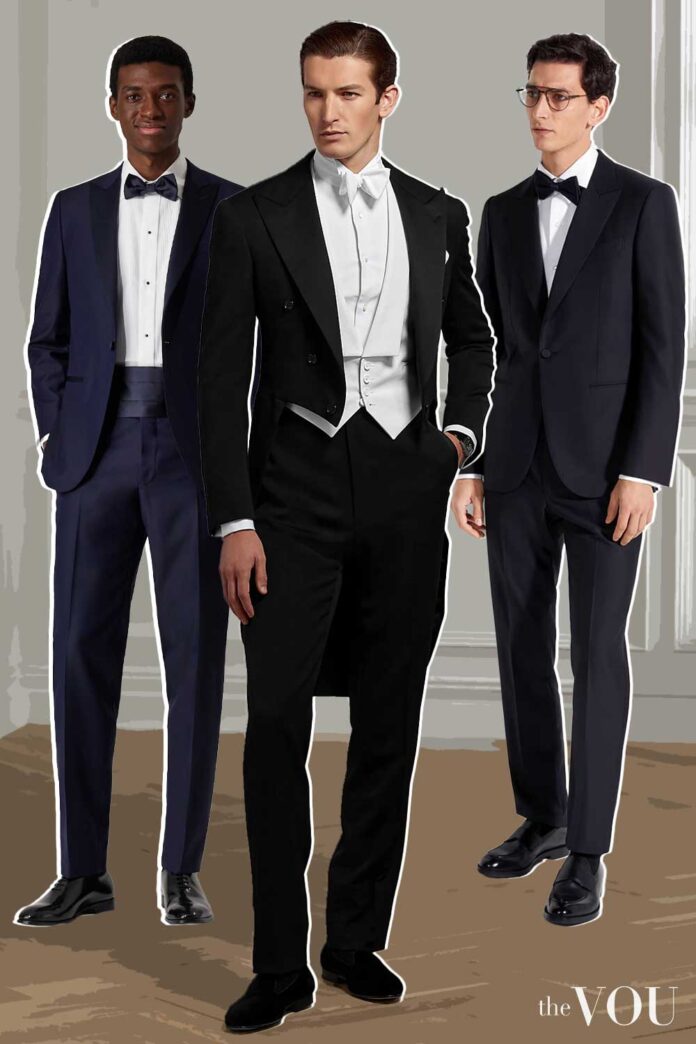Whenever attending high-profile events, the sartorial expectations are clear – men must dress in a sophisticated manner that exudes elegance, refinement, and poise.
This is where the concept of formal dress codes comes into play, setting the standards and rules for appropriate attire that have evolved over centuries of social tradition.
However, navigating the fine lines of men’s formal wear can be tricky, leaving many unsure of how to put together the perfect outfit for these special occasions while avoiding common pitfalls that can undermine an otherwise impeccable ensemble.

In this definitive guide, we’ll explore the fundamentals of formal attire for men, uncovering the key elements, the various dress code subcategories, and how to execute each look flawlessly with confidence and sophistication.
By the end, you’ll have a crystal-clear understanding of men’s formal wear, empowering you to make informed choices and look your absolute best at your next grand event, whether it’s a black-tie gala, formal wedding, or corporate gathering.
Formal Attire Origins and Cultural Significance

The formal attire dress code is reserved for grand events, such as weddings, galas, opera performances, state dinners, and formal dances that require the highest level of sartorial sophistication.
Formal dress codes originated in the 18th century among the European aristocracy as a way for the upper echelons of society to distinguish themselves and showcase their wealth, status, and refined tastes through meticulously crafted garments and accessories.
Over time, these sartorial conventions became increasingly codified, with strict rules governing the appropriate materials, colours, silhouettes, and even the specific occasions for which each style was deemed suitable.
The evolution of formal wear reflects broader social changes, from the ornate court dress of Versailles to the streamlined elegance of modern black-tie attire, each era contributing to the rich tapestry of masculine formal fashion.
Nevertheless, while the details of formal wear have adapted to the changing tides of fashion and social norms, the underlying principles of elegance, sophistication, and meticulous attention to detail have remained constant throughout the centuries.
Today, when a formal dress code is specified on an event invitation, it generally means that male guests are expected to wear a suit at a minimum, with the specific level of formality determined by additional qualifiers, such as “black tie” or “white tie.”
For the most formal occasions, tuxedos or “black-tie” outfits are the recommended attire, representing the pinnacle of evening elegance for contemporary gentlemen.
Other essential elements of men’s formal wear include a crisp dress shirt with proper collar construction, high-quality dress pants with appropriate rise and break, and elegant accessories that complement rather than compete with the overall ensemble.
Suits and Tuxedos – The Foundation of Formal Elegance

Men should always wear suits or tuxedos at formal events, with tuxedos being strongly preferred if the invitation includes phrases like “black tie optional,” “black tie preferred,” or simply “black tie.”
This preference for tuxedos can be traced back to the late 19th century, when this garment was introduced as a more casual alternative to the ubiquitous tailcoat, offering gentlemen a sophisticated yet slightly more relaxed option for evening events.
With sleek, streamlined silhouettes and distinctive satin-trimmed lapels that catch and reflect light elegantly, tuxedos have long been associated with elevated style and sophistication suited for formal occasions like black-tie galas and high-society weddings.
The construction details of a tuxedo – from the silk facings on the lapels to the satin stripe down the trouser leg – serve both aesthetic and functional purposes, creating a cohesive look that distinguishes evening wear from daytime business attire.
However, well-tailored suits can also be an acceptable and sophisticated option for formal events, particularly when the dress code allows for some flexibility or when a tuxedo might be considered excessive for the specific occasion.
While tuxedos may be the go-to choice for the most exclusive affairs, a suit in a dark, classic colour like black, midnight blue, or charcoal can be equally appropriate and refined when executed with proper attention to fit, fabric quality, and styling details.
The key lies in selecting suits with superior construction, premium fabrics, and impeccable tailoring that elevate them beyond everyday business wear to formal-appropriate attire.
Lighter hues, on the other hand, are more suited for semi-formal gatherings or daytime events, where a slightly more relaxed aesthetic is appropriate and the formality level doesn’t demand the gravitas of darker colours.
Dress Shirts and Trousers – The Canvas of Formal Style
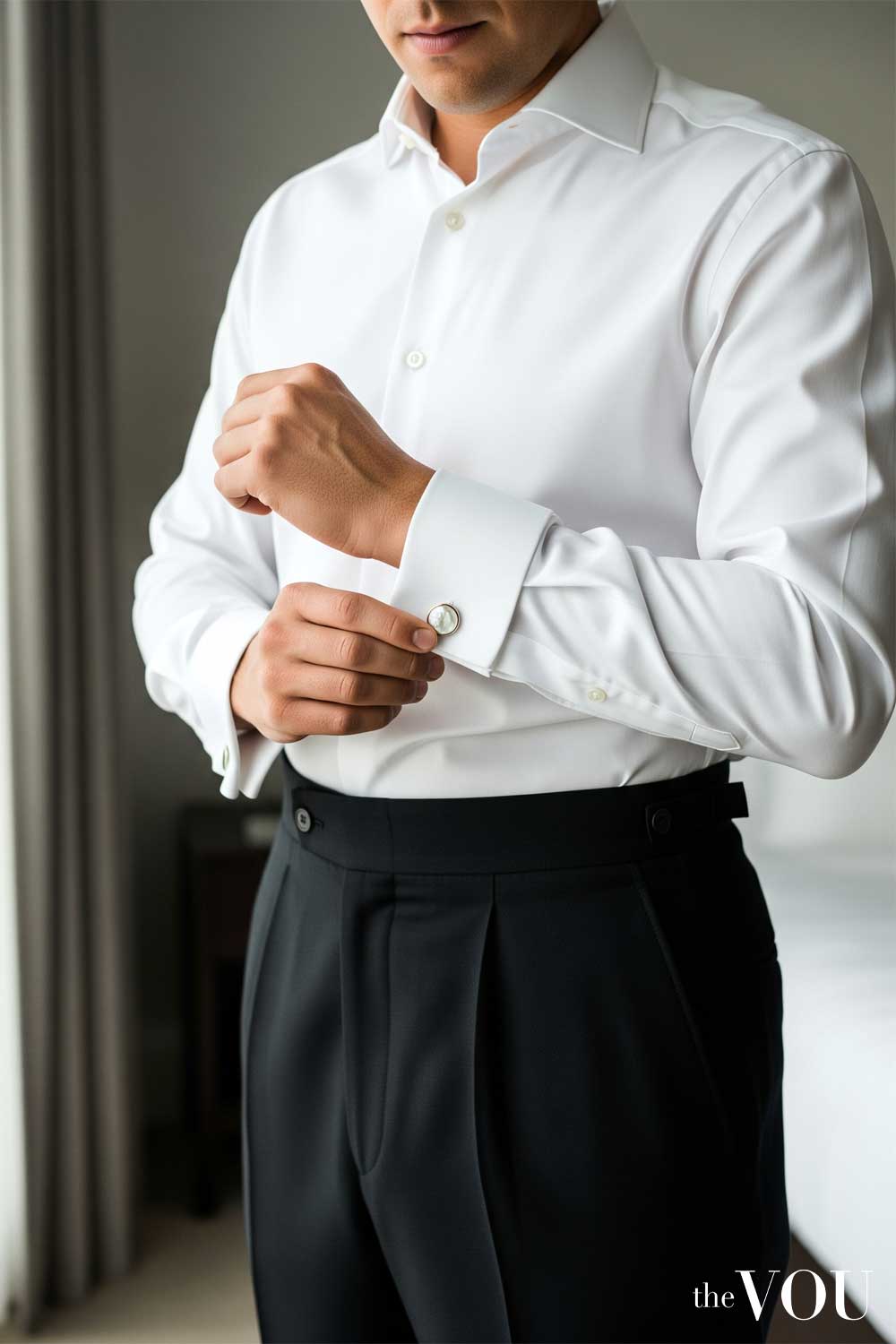
Whether you choose a suit or a tuxedo, it’s essential to pair it with a high-quality dress shirt and dress pants that meet the exacting standards of formal wear construction and fit.
The pants should match the suit or tuxedo jacket in style, shade, and fabric composition, ensuring a seamless, cohesive look that appears intentionally coordinated rather than hastily assembled.
Modern formal trousers should feature a higher rise that sits at or slightly above the natural waist, creating a more elegant silhouette and allowing for proper shirt tucking without the need for a belt.
The traditional dress shirt choice for formal wear is a white button-down with a spread or point collar, crafted from high-quality cotton with a smooth, lustrous finish that complements the formality of the occasion.
The simplicity and timelessness of a white shirt provide the perfect canvas for the rest of the ensemble, allowing the suit or tuxedo to take centre stage while offering a crisp, clean backdrop for accessories like bow ties or neckties.
The construction quality of formal dress shirts differs significantly from that of casual options, featuring details such as mother-of-pearl buttons, French seams, and reinforced stress points that ensure durability and maintain their appearance throughout long events.
Other shirt colours, such as light blue or pale pink, can also be considered for semi-formal events or daytime formal occasions. Still, they tend to have a more casual feel that may not be entirely in keeping with the most traditional formal dress codes.
It’s worth noting that the quality and fit of the dress shirt are just as important as the colour selection, as this garment serves as the foundation upon which the entire ensemble is built.
A well-fitted shirt with a sturdy collar that maintains its shape, properly proportioned cuffs that extend the correct distance beyond the jacket sleeve, and a body that follows the natural lines of the torso will significantly elevate the overall look.
Conversely, a poorly made or ill-fitting shirt – whether too tight, too loose, or constructed from inferior materials – can quickly undermine the entire ensemble and detract from an otherwise sophisticated appearance.
Footwear and Accessories – The Finishing Touches
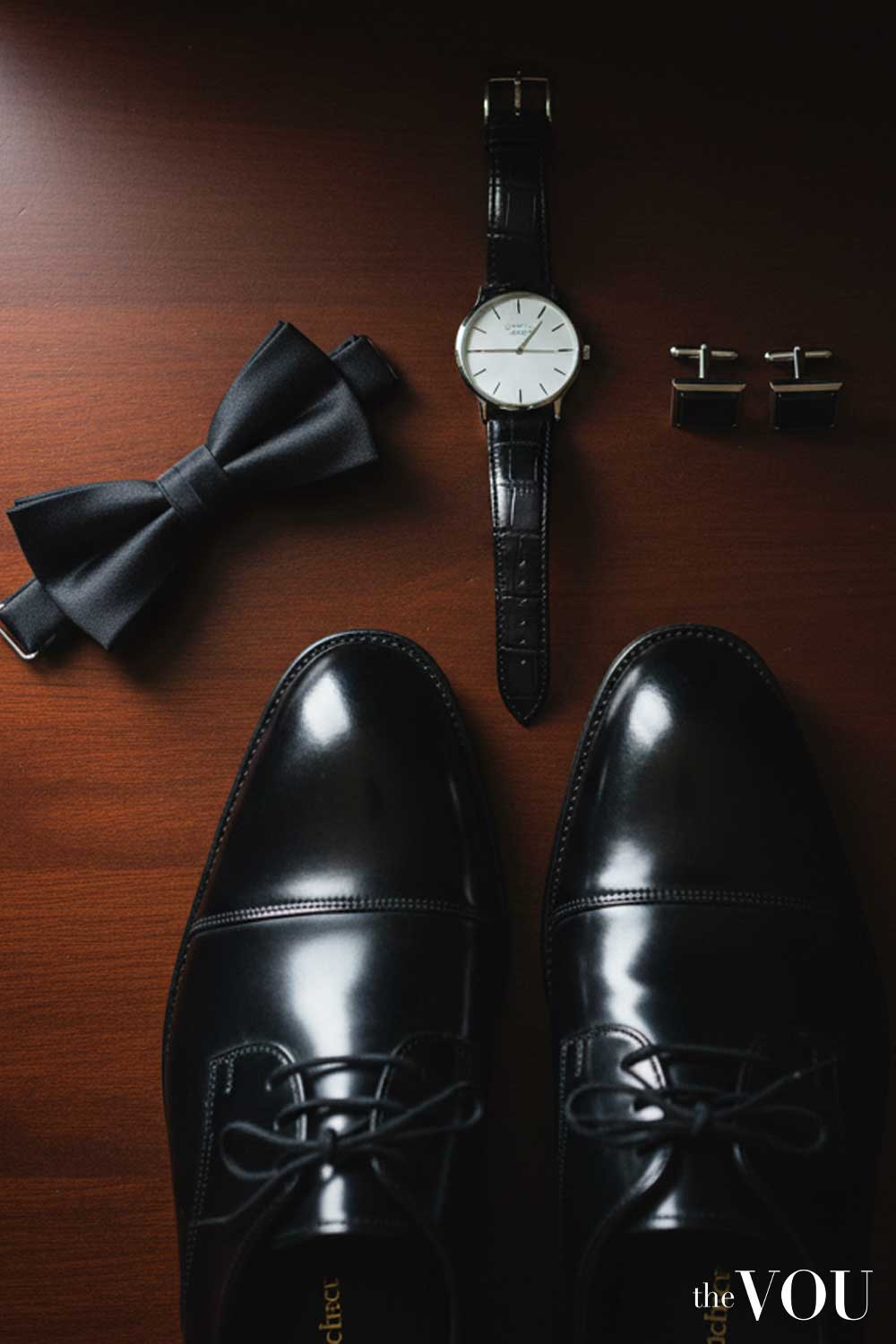
Footwear is a crucial element of any formal outfit that can make or break the overall impression, and dress shoes are the only acceptable option if you wish to adhere to formal dress code standards without compromise.
A well-polished pair of leather oxfords or brogues in a classic black or dark brown hue will provide the perfect foundation for your formal attire, with the leather quality and construction details serving as indicators of overall sophistication.
For those attending events that involve significant amounts of standing or dancing, specialised footwear from brands like Ballroom Shoes can offer the perfect combination of formal elegance and performance functionality, ensuring comfort throughout extended evening events.
The sole construction, heel height, and leather flexibility of formal shoes all contribute to both appearance and comfort, making quality footwear an investment in both style and practicality.
To complete your look, add a few carefully selected accessories that enhance rather than overwhelm the ensemble; a black bow tie is essential for tuxedos, paired with studs and cufflinks that complement the overall metal palette of your accessories.
A cummerbund in silk or satin can also be a stylish addition that creates a clean waistline and adds textural interest to the formal ensemble.
However, modern interpretations sometimes favour low-profile waistcoats for a more contemporary approach.
Cufflinks can be a refined touch when wearing a suit, offering an opportunity to introduce subtle personality through design choices while maintaining the overall formal aesthetic.
Still, it’s essential to avoid wearing a belt with formal trousers, as this is considered inappropriate and disrupts the clean lines that characterise proper formal wear.
The key to mastering the accessory selection is to keep choices simple, elegant, and understated, avoiding the temptation to over-accessorise or introduce elements that compete for attention.
The focus should remain on the quality and elegance of your core formal wear components, with accessories that accentuate and complement the look rather than overwhelm it or distract from the sophisticated simplicity that defines truly refined formal attire.
Formal Attire by Season – Adapting to Weather and Occasion

In addition to the core elements of formal wear, it’s essential to consider the impact of seasonality, weather conditions, and fabric choices when assembling your ensemble for optimal comfort and appropriateness.
Depending on the time of year, venue characteristics, and the nature of the event, you can experiment with slightly different textures, weights, and layering strategies to ensure you stay comfortable while maintaining a refined, sophisticated aesthetic that meets formal standards.
Seasonal considerations extend beyond mere comfort to encompass colour palettes, fabric weights, and even specific styling details that align with traditional seasonal conventions in formal wear.
Formal Attire in Spring and Summer
During the warmer months, when formal events are often held outdoors during the day or in venues with limited air conditioning, selecting appropriate fabrics and construction becomes crucial for maintaining both comfort and appearance.
As such, opting for lighter-weight fabrics in your formal wear is generally recommended, though this doesn’t mean compromising on quality or structure that defines proper formal attire.
For example, men may choose tropical wool or lightweight mohair blends for their suits or tuxedos, materials that offer breathability while maintaining the drape and appearance expected in formal settings.
High-quality cotton or linen dress shirts can also be an excellent choice for summer and spring formal events, provided they’re properly constructed with adequate structure in the collar and cuffs to maintain their formal appearance throughout the event.
Lighter colours may be more acceptable for daytime formal events during warmer months, although evening events typically still call for traditional, darker hues, regardless of the season.
Formal Attire in Fall and Winter
When the cooler months arrive, layering becomes both a practical necessity and an opportunity to demonstrate a sophisticated understanding of formal wear principles through proper outerwear selection.
Heavier fabrics, such as wool flannel, cashmere blends, or winter-weight wool, can be excellent choices for tuxedos or suits, providing insulation and comfort without compromising the refined aesthetic that formal events demand.
For winter weddings or black-tie galas held in cooler climates, a wool tuxedo or suit paired with a well-fitted overcoat in a complementary dark colour can be both stylish and practical.
The added layer of warmth will allow you to comfortably enjoy the event without sacrificing sartorial elegance or appearing inappropriately dressed for the weather conditions.
Formal overcoats should be selected with the same attention to quality and fit as the underlying formal wear, ensuring that the silhouette remains clean and proportional even when layered.
Types of Formal Dress Codes – Understanding the Hierarchy

One of the primary reasons many men struggle to interpret and execute formal dress codes correctly is the sheer number of variations within this sartorial realm, each with its own historical context and specific requirements.
From the most sophisticated white tie to the more relaxed business formal, each dress code has its own unique set of rules, expectations, and appropriate occasions that determine the specific garments and styling approaches required.
Understanding these distinctions is crucial for avoiding the embarrassment of arriving inappropriately dressed and for demonstrating the social awareness that formal events implicitly require.
| Dress Code | Description | Required Attire | Typical Occasions |
|---|---|---|---|
| White Tie | The most formal and sophisticated dress code, dating back to 18th-century European nobility traditions. | Black tailcoat, white shirt with wing collar, white waistcoat, white bow tie, black trousers with double stripe, and patent leather shoes. | State dinners, royal events, opera galas, diplomatic functions |
| Black Tie | A popular formal dress code for evening events requires sophisticated elegance. | Tuxedo (black or midnight blue), white dress shirt, black bow tie, cummerbund or waistcoat, and patent leather shoes. | Formal weddings, charity galas, award ceremonies, upscale evening events |
| Formal/Black Tie Optional | A slightly more relaxed version, allowing flexibility while maintaining formal standards. | Tuxedo preferred, but dark suit acceptable; white dress shirt and dress shoes required. | Wedding receptions, corporate events, fundraising dinners |
| Semi-Formal | Sits between formal and casual, offering more flexibility while requiring sophisticated presentation. | Dark suit, dress shirt, dress shoes. Tie is optional but recommended for evening events. | Cocktail parties, informal weddings, business dinners |
| Business Formal | The standard professional attire for corporate environments and business events. | Conservative suit (navy or charcoal), dress shirt, tie, and polished dress shoes. | Board meetings, conferences, client presentations, corporate functions |
| Business Casual | A more relaxed professional standard focusing on polished, office-appropriate clothing. | Dress pants or chinos, a collared shirt, and dress shoes or loafers. Blazer optional. | Office environments, casual client meetings, workplace social events |
Understanding the nuances between these different formal dress code subcategories is crucial for social and professional success, as it demonstrates cultural literacy and respect for established conventions while ensuring you’re appropriately attired for any high-profile event you may attend.
White Tie Dress Code – The Pinnacle of Formal Elegance
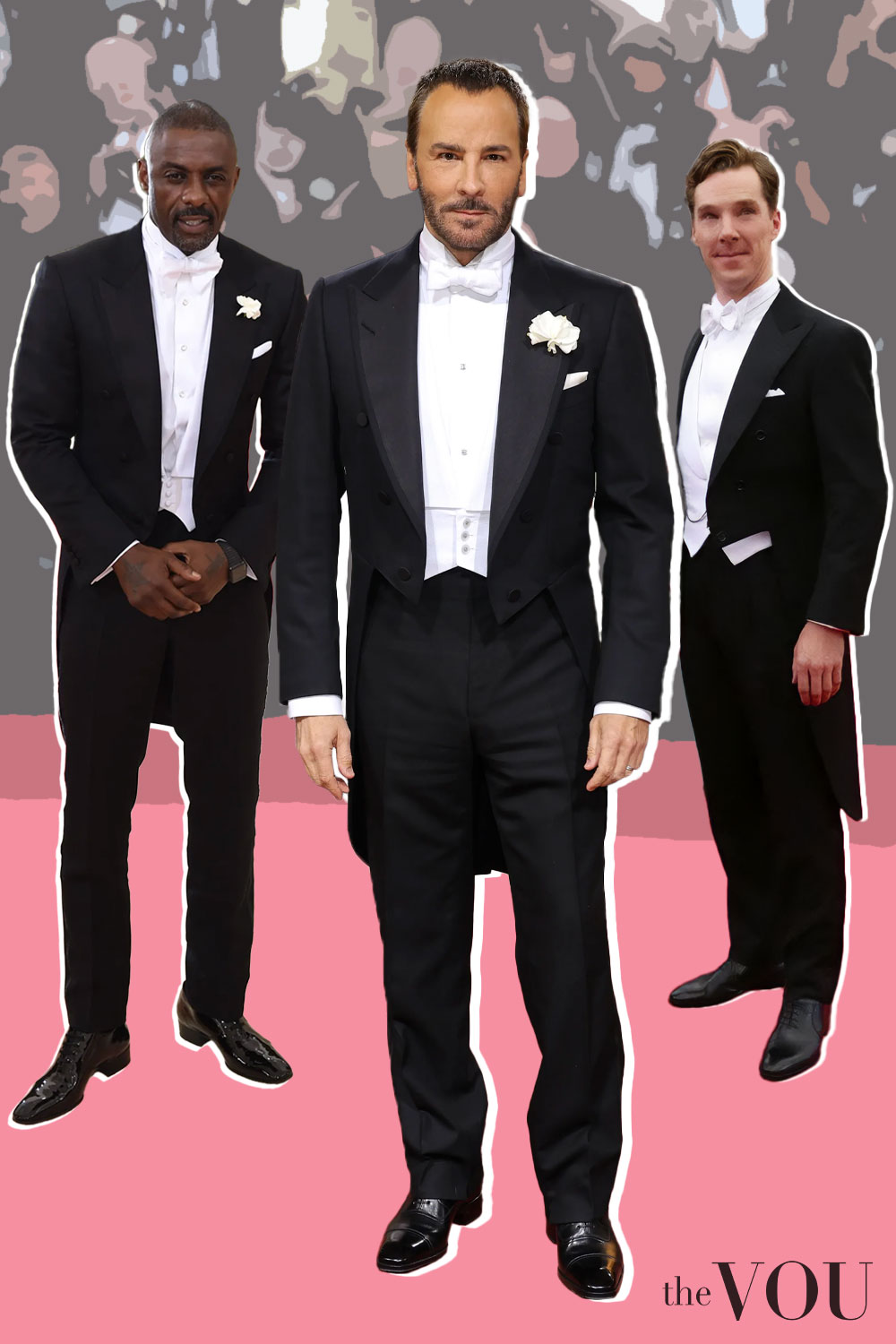
White tie represents the most formal and sophisticated dress code in Western menswear, dating back to the 18th century when it was favoured by European aristocracy and remains the standard for the most prestigious state and cultural events.
This dress code isn’t standard in the modern era. However, it can still be seen at the most exclusive and prestigious events, including state dinners, royal functions, and certain opera galas where tradition and ceremony take precedence.
A white tie outfit for men must always consist of a black tailcoat with peak lapels, a white marcella dress shirt with a detachable wing collar, a white marcella waistcoat, and a hand-tied white bow tie.
Black trousers with a double satin stripe down each leg and patent leather shoes complete the ensemble, with mandatory accessories including white gloves and optional elements like a white pocket square or boutonnière.
The formality and attention to detail required for the white-tie dress code make it the most challenging to execute correctly, requiring not only the correct garments but also an understanding of the specific styling and etiquette conventions that accompany this level of formality.
When executed correctly, however, white tie exudes unparalleled elegance and sophistication that connects the wearer to centuries of formal tradition and ceremonial importance.
Black Tie Dress Code – Evening Elegance Perfected
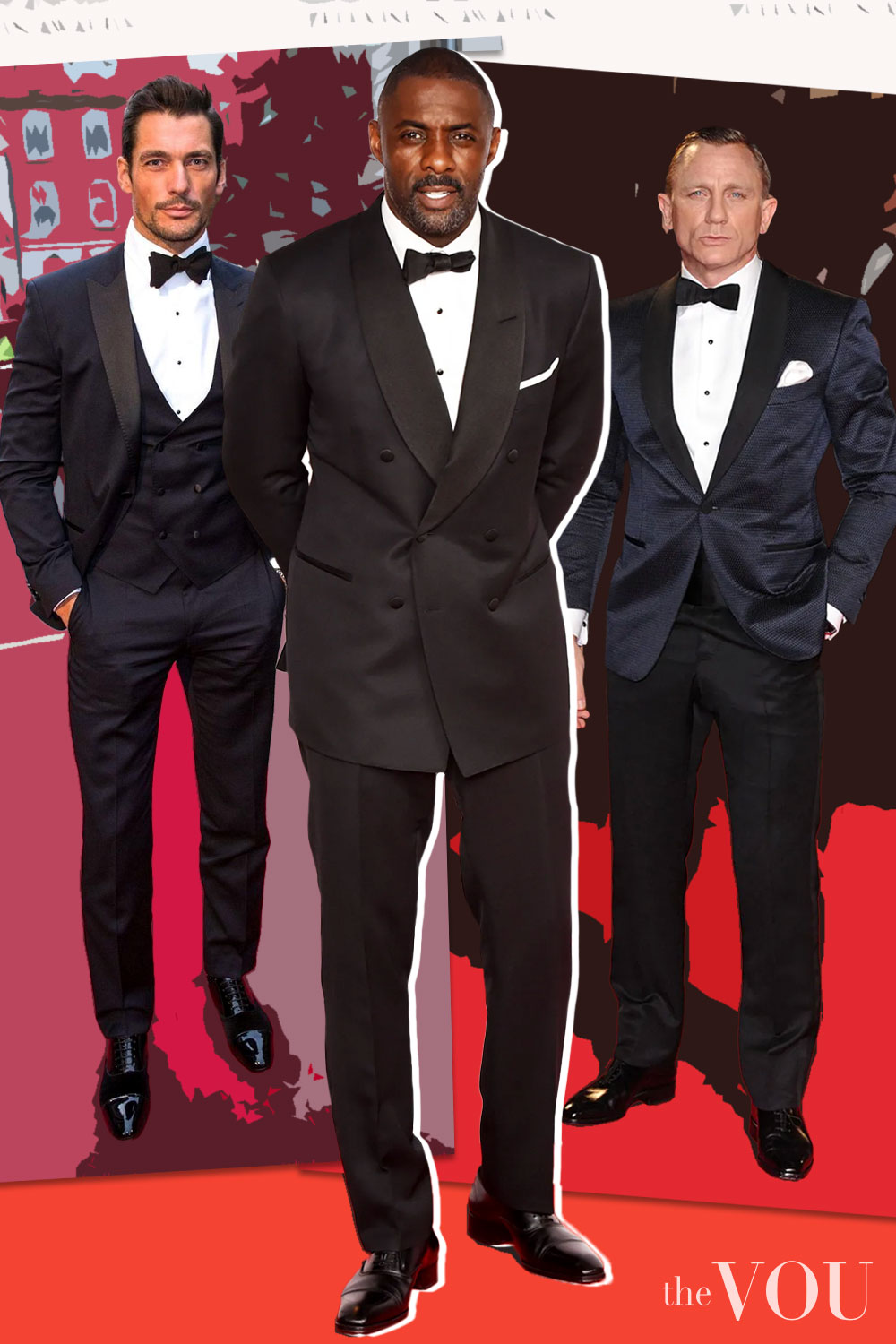
The black-tie dress code sits one level below white tie in terms of formality. Still, it remains one of the most popular and widely encountered formal dress code variations at weddings, galas, and other high-end events where hosts aim to create a sophisticated evening ambience.
Men’s black tie attire centres around the tuxedo, and while black remains the classic and most common colour choice, midnight blue has gained acceptance. It is often considered more elegant under artificial lighting conditions.
The key components of a black tie outfit include a crisp white dress shirt with a turndown collar (wing collars are reserved for white tie), a hand-tied black bow tie, and highly polished patent leather or high-shine calfskin dress shoes.
Additional required elements include a black silk cummerbund or low-cut waistcoat, black silk socks, and optional but recommended accessories, such as mother-of-pearl or onyx shirt studs and cufflinks.
Black tie represents a more accessible and widely adopted formal dress code than white tie, making it an excellent choice for those who want to achieve a formal, elegant look without the strict sartorial constraints and expense of the highest-level formal wear.
Formal/Black Tie Optional Dress Code – Sophisticated Flexibility
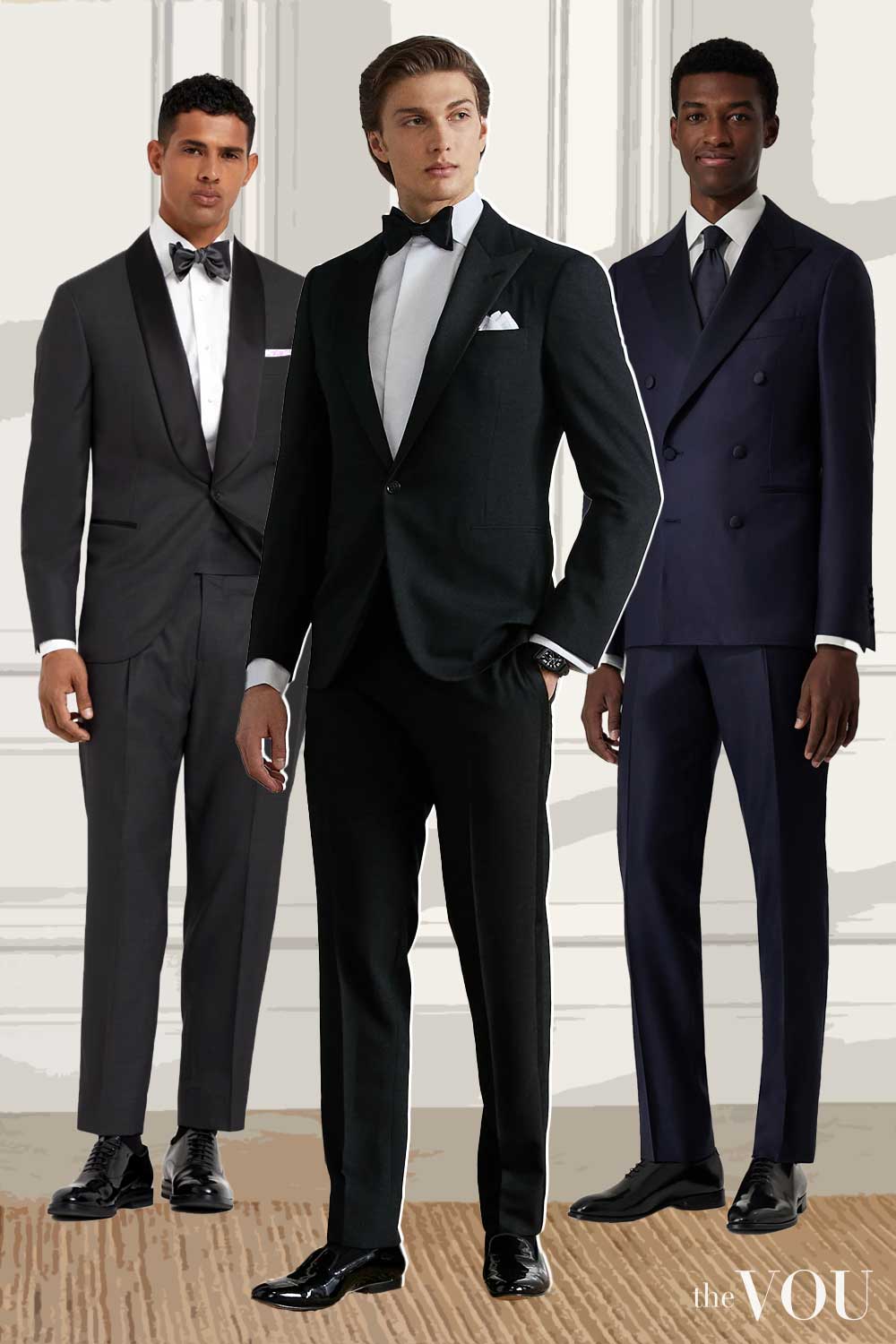
A slightly more relaxed version of the black tie dress code, “formal” or “black tie optional“, allows for more flexibility in attire while maintaining the expectation of sophisticated presentation and attention to formal dress principles.
While a tuxedo remains the preferred and most appropriate choice, dark suits in colours like navy or charcoal are also acceptable, provided they meet high standards of fit, fabric quality, and styling that distinguish them from everyday business wear.
The core components of this dress code maintain formal standards – a white dress shirt with proper collar construction, appropriate neckwear (bow tie preferred, but high-quality neckties acceptable), and polished dress shoes that meet formal footwear standards.
However, the option to wear a suit rather than a tuxedo makes this a more accessible choice for guests who may not own or feel comfortable investing in a complete tuxedo ensemble for a single event.
This dress code variation is particularly prevalent at wedding receptions, where couples may want to strike a balance between the desire for formal elegance and the practical considerations of their guests’ comfort and wardrobe accessibility.
Semi-Formal Dress Code – Balanced Sophistication
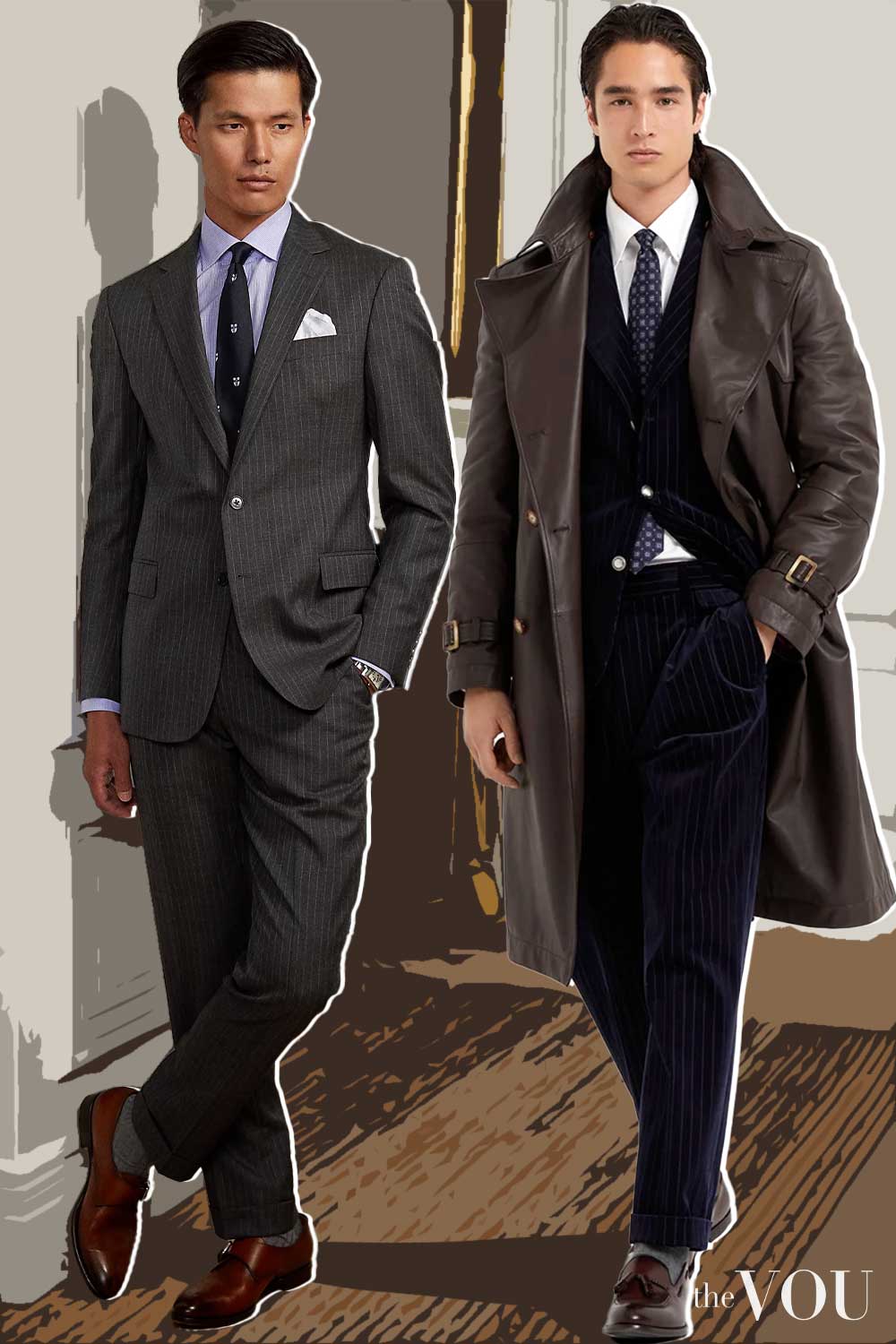
The semi-formal dress code, which occupies the middle ground between formal and casual ends of the sartorial spectrum, offers men more flexibility in their attire choices while still requiring a sophisticated, polished appearance.
This dress code is popular for cocktail parties, office holiday celebrations, informal wedding receptions, or daytime formal events where full formal wear might be excessive but casual attire would be inappropriate.
The foundation of any semi-formal outfit is a well-tailored dark suit in navy, charcoal, or dark grey, paired with a high-quality dress shirt in white or light blue and polished dress shoes that complement the overall colour palette.
Accessories like a silk tie, linen pocket square, or quality cufflinks can be added to enhance the look, but they are not mandatory. They should be selected based on the specific occasion and personal style preferences.
The overall appearance should maintain an air of sophistication and intentionality while being slightly more relaxed and approachable than full formal wear, striking a balance that’s both appropriate for the occasion and comfortable for extended wear.
Business Formal Dress Code – Professional Authority
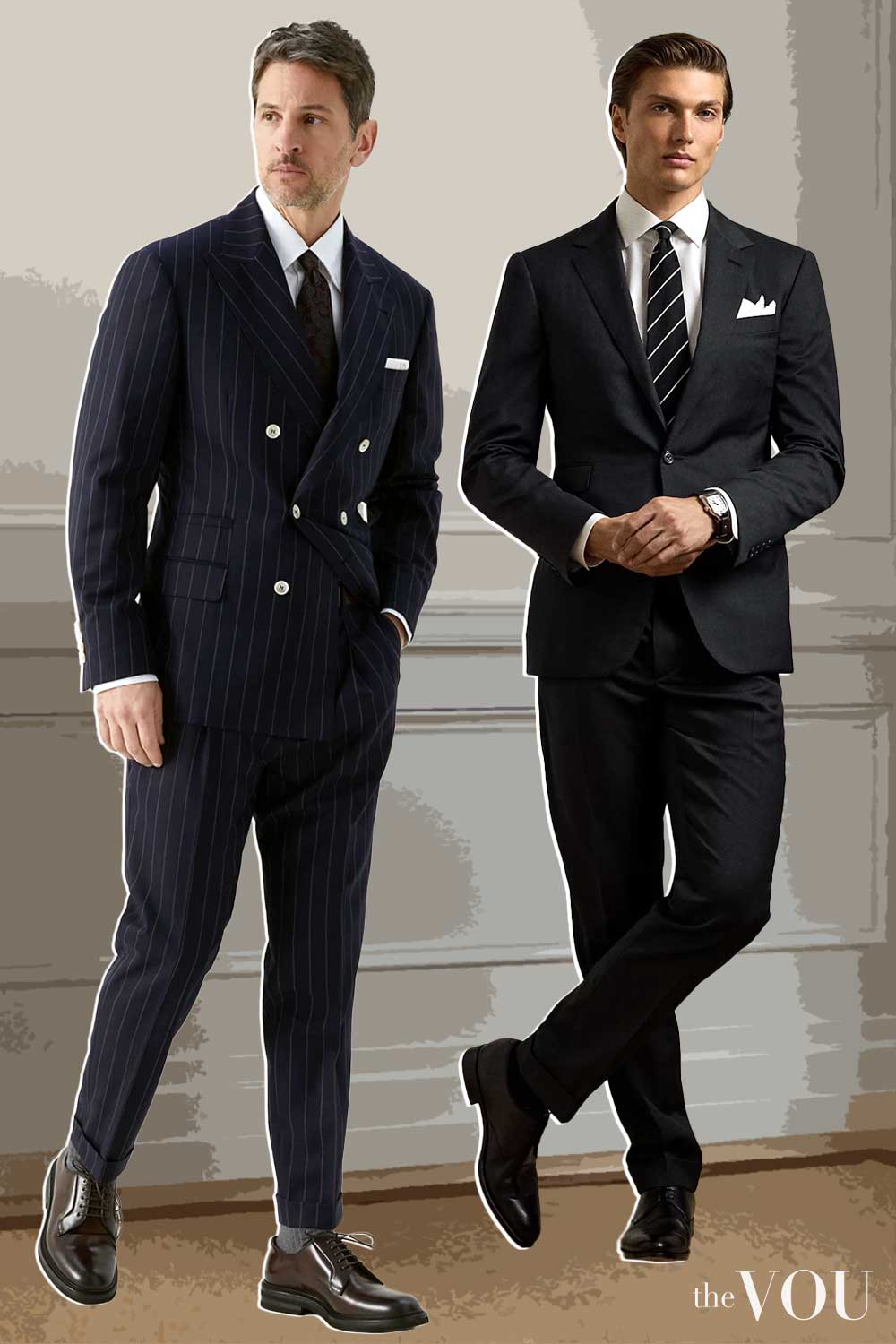
The business formal dress code represents the standard professional attire required in many corporate settings, including high-profile conferences, client meetings, board presentations, or formal company events where projecting authority and competence is essential.
This dress code is fundamentally about projecting a polished, authoritative image that inspires confidence and respect in professional settings while adhering to conservative standards that won’t distract from business objectives.
For men, business formal typically means a well-fitted suit in conservative colours like navy, charcoal, or dark grey, paired with a crisp dress shirt in white or light blue and highly polished leather dress shoes in black or dark brown.
A silk tie is generally required and should be selected in conservative patterns or solid colours that complement the suit and shirt combination without being distracting or overly bold.
Accessories should be kept to a professional minimum, focusing on quality rather than quantity: a leather dress belt that matches the shoes, a conservative metal watch, and possibly subtle cufflinks that enhance rather than dominate the overall look.
Business Casual Dress Code – Professional Flexibility

Business casual occupies the more relaxed end of the professional dress spectrum, commonly seen in contemporary office environments where a slightly more casual yet still professional and polished look is considered appropriate and practical.
This dress code acknowledges the evolution of workplace culture while maintaining standards that ensure appropriate professional presentation and respect for business environments and colleagues.
For men, business casual typically consists of well-fitted dress pants or high-quality chinos in neutral colours, a collared shirt (either dress shirt or high-quality polo), and leather shoes ranging from dress shoes to clean, polished loafers.
A blazer or sport coat can be added for a more put-together appearance, particularly for client meetings or essential presentations. Still, the overall aesthetic should remain approachable rather than intimidatingly formal.
The key to successful business casual dressing lies in selecting pieces that are obviously intentional and well-coordinated rather than appearing thrown together or overly casual for the professional environment.
Formal Attire Outfit Ideas and Styling Tips
Now that we’ve established a comprehensive understanding of the different formal dress code categories and their specific requirements, let’s explore concrete outfit ideas and practical styling tips to help you execute each look flawlessly and project confidence at your next high-profile event.
These styling approaches take into account not only the technical requirements of each dress code but also the subtle details that distinguish truly sophisticated formal wear from merely adequate attempts at formal dressing.
Formal Wedding Attire – Celebrating in Style
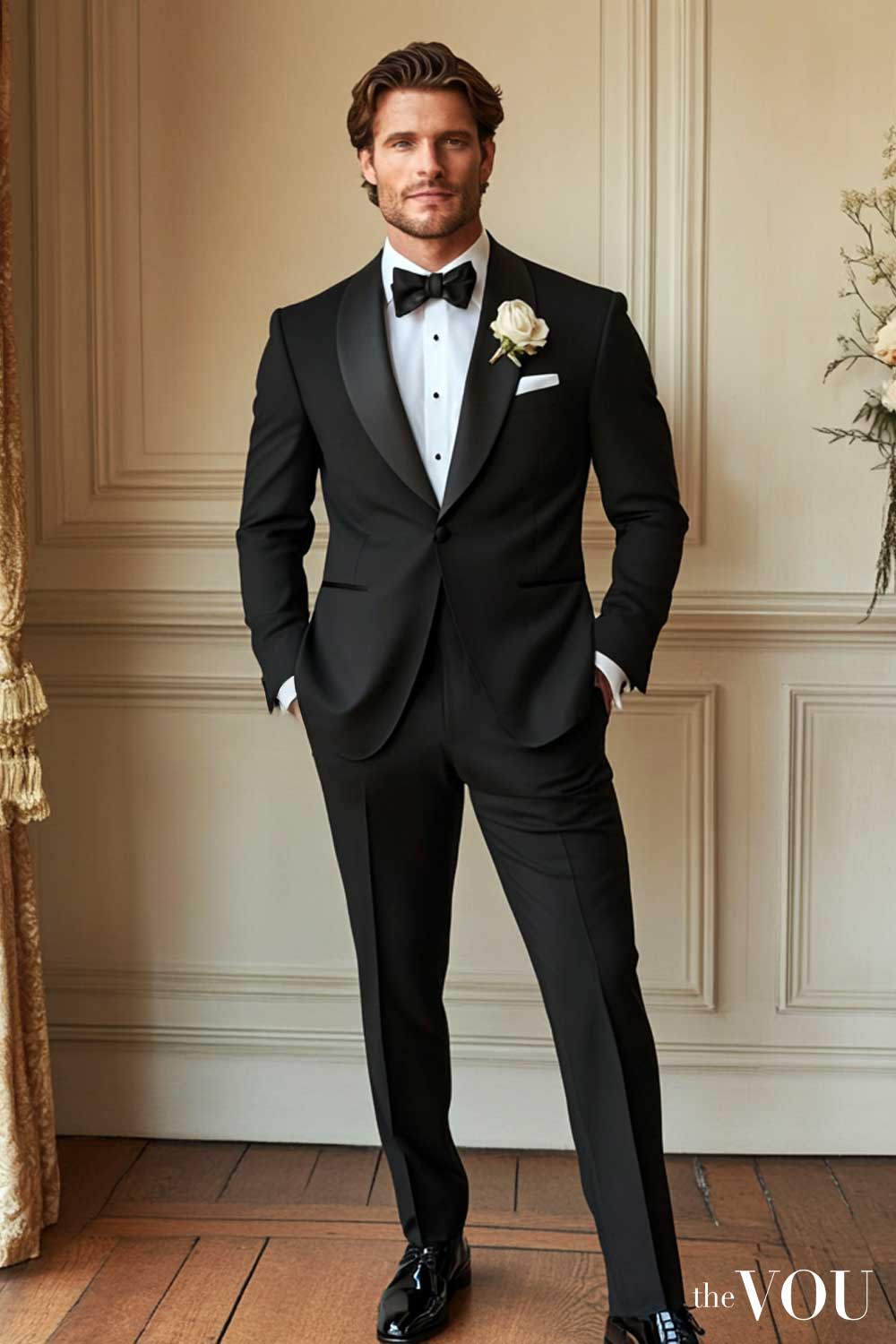
For a formal wedding, your attire should reflect and complement the elevated level of sophistication that the occasion calls for while showing appropriate respect for the couple and the significance of their celebration.
If the dress code specifies “black tie optional” or “formal,” you have two excellent options to choose from, each with its own advantages and appropriate execution:
The first and preferred option is a classic tuxedo – well-fitted in black or midnight blue, both equally appropriate – matched with a crisp white dress shirt with proper collar construction, a hand-tied black bow tie, and highly polished patent leather or calfskin dress shoes.
Subtle yet high-quality accessories, such as mother-of-pearl cufflinks, black silk socks, and a white pocket square, can further elevate the look while maintaining the understated elegance befitting someone else’s special day.
If you don’t have access to or prefer not to wear a tuxedo, a dark, expertly tailored suit can be appropriate and sophisticated.
Still, the execution must be impeccable: stick to navy or charcoal in premium fabrics, pair with a crisp white dress shirt, select either a classic silk tie or bow tie in appropriate colours, and finish with highly polished dress shoes.
Quality accessories, such as cufflinks, a silk pocket square, or a fine leather belt, can add refinement while maintaining the respectful tone appropriate for wedding guests.
| Option | Description | Key Considerations |
|---|---|---|
| Tuxedo | Classic black or midnight blue tuxedo with white dress shirt, black bow tie, and patent leather shoes. Quality accessories enhance the look. | Preferred choice for evening weddings; ensures appropriate formality level; timeless and elegant |
| Dark Suit | Expertly tailored suit in navy or charcoal, white dress shirt, silk tie or bow tie, and polished dress shoes with quality accessories. | More accessible option; requires impeccable fit and fabric quality; appropriate for daytime or less formal evening events. |
Whichever route you choose, ensure that the fit and tailoring of your formal wedding attire are absolutely impeccable, as nothing undermines a formal look quite like ill-fitting garments or clothing that appears hastily assembled rather than thoughtfully coordinated.
Black-Tie Gala Attire – Evening Sophistication
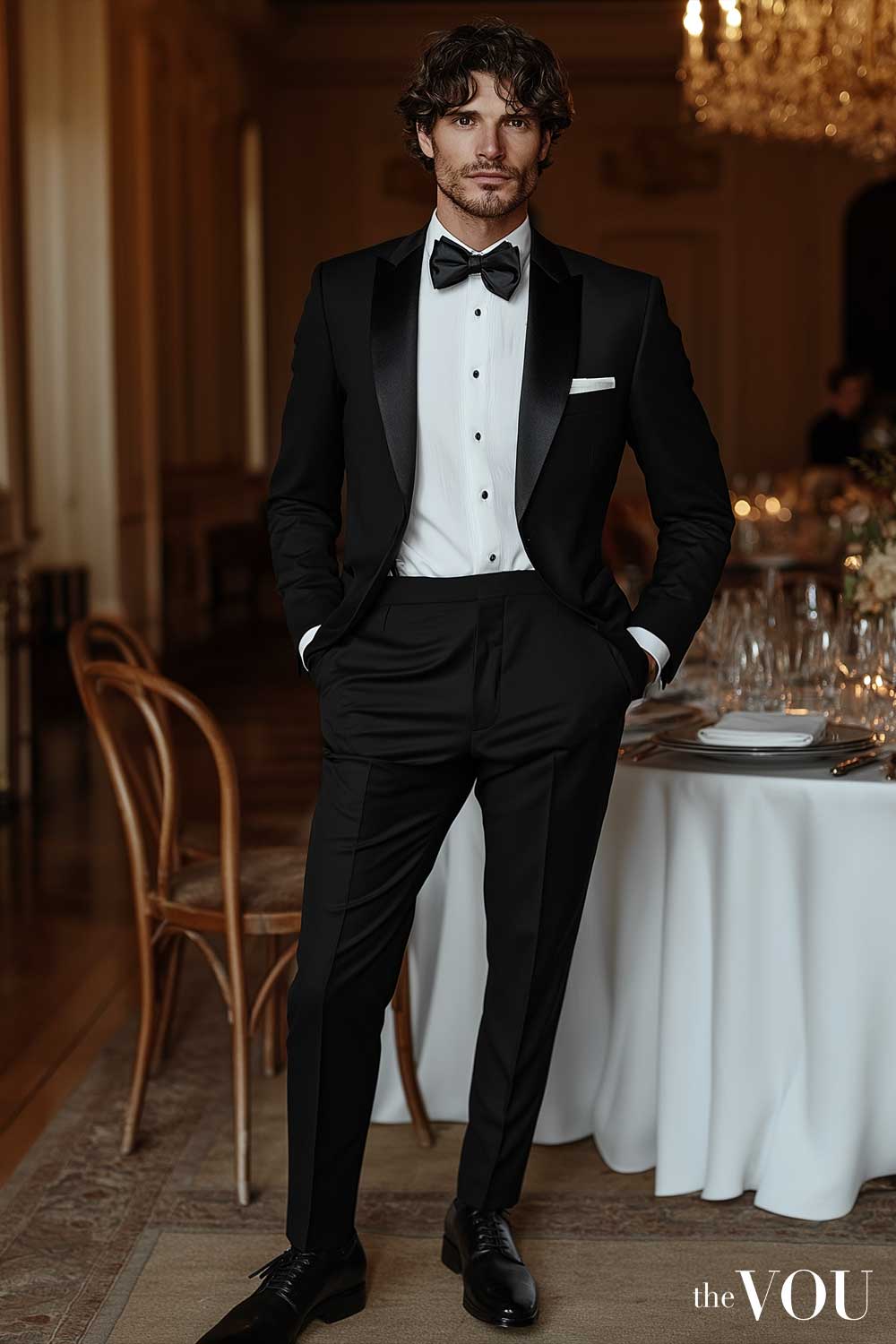
A tuxedo is the undisputed and only appropriate choice for attending a prestigious black-tie gala, representing the epitome of masculine evening elegance and respect for the event’s significance.
The execution should be flawless: wear a classic black or midnight blue tuxedo with proper satin-faced lapels, pairing it with a crisp white marcella or fine cotton dress shirt, a hand-tied black bow tie, and high-quality patent leather or highly polished calfskin dress shoes.
Consider investing in quality formal accessories such as mother-of-pearl or onyx cufflinks and shirt studs, which draw subtle attention to the craftsmanship of your shirt while adding understated luxury to the overall ensemble.
A sleek black silk cummerbund can cinch the waist and create a streamlined silhouette while adding textural interest.
However, some modern interpretations favour low-cut waistcoats for a more contemporary but equally appropriate approach.
Business Formal Event Attire – Professional Excellence
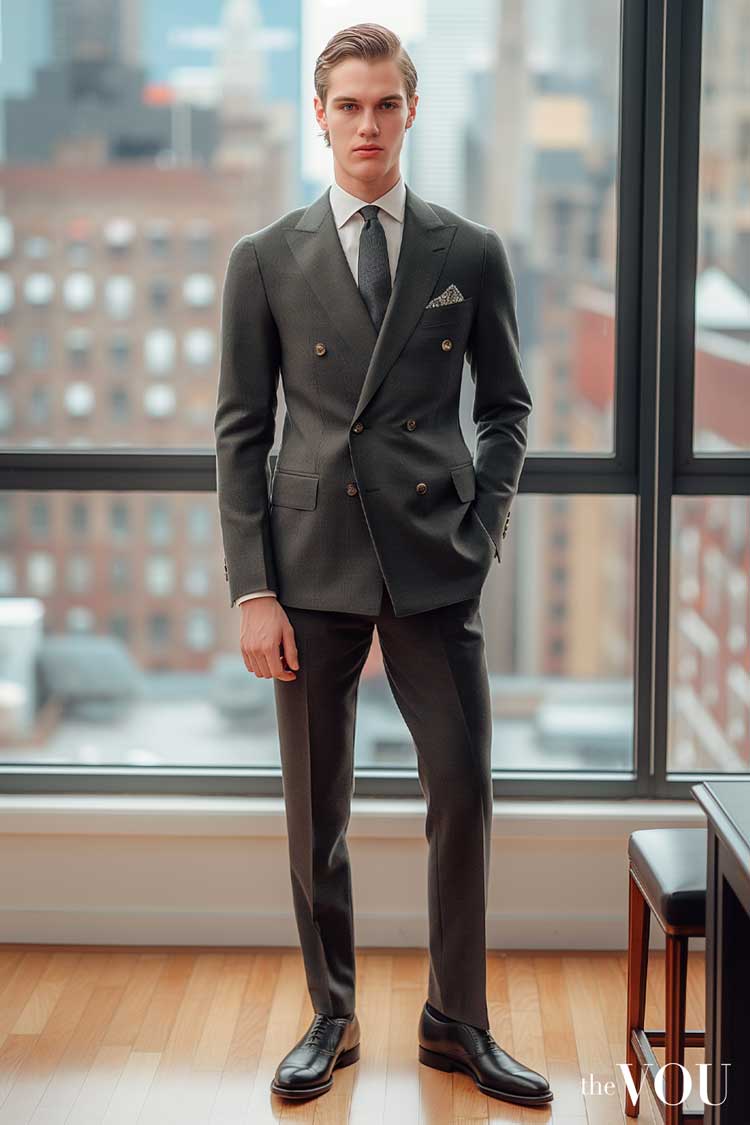
For business formal events, such as high-profile conferences, corporate dinners, or essential client presentations, a well-tailored suit in conservative colours represents the foundation of an appropriate professional presentation.
Select a suit in navy, charcoal, or dark grey – colours that convey authority and competence while remaining versatile across different business contexts and lighting conditions.
Pair the suit with a crisp dress shirt in white or light blue, colours that provide the perfect backdrop for the suit while maintaining the professional standards expected in corporate environments.
When selecting a tie, opt for silk in classic patterns like repp stripes, subtle geometric designs, or solid colours that complement rather than compete with the suit, avoiding bold patterns or bright colours that could be distracting in professional settings.
Footwear should consist of highly polished leather dress shoes in black or dark brown, with the leather quality and construction reflecting the same attention to excellence as the rest of the ensemble.
Accessories for business formal events should enhance rather than dominate: a leather dress belt that matches the shoes, an understated but quality watch that reflects professional success, and possibly subtle cufflinks that add refinement without appearing ostentatious.
The overall objective is to project polished authority and competence through the careful selection and coordination of classic, high-quality garments that inspire confidence and respect in professional contexts.
Formal Attire Do’s and Don’ts – Avoiding Mistakes
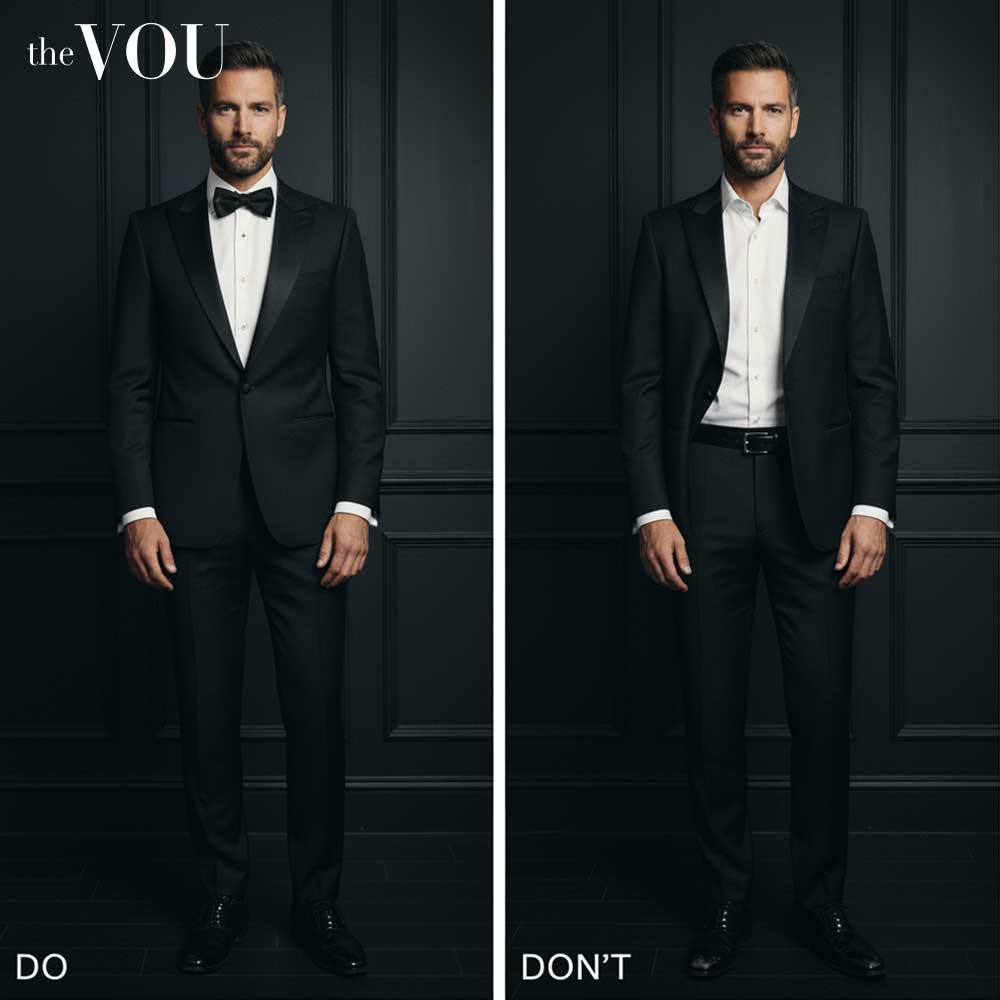
Essential Do’s for Formal Success
Invest in Well-Fitting, High-Quality Garments
Well-constructed, expertly tailored garments form the non-negotiable foundation of any exceptional formal look, making the difference between appearing sophisticated versus merely dressed up.
Invest in suits, tuxedos, and dress shirts from reputable brands known for their attention to detail, superior craftsmanship, and use of premium materials that age gracefully and maintain their appearance over time.
A well-fitted ensemble will elevate your appearance significantly and ensure you look poised, confident, and naturally elegant rather than uncomfortable or out of place in formal settings.
Embrace Timeless Styles and Classic Colours
When it comes to formal wear, it’s essential to avoid trendy elements and focus on timeless, sophisticated styles that will remain appropriate and elegant regardless of changing fashion trends.
Stick to classic colours like black, navy, midnight blue, charcoal, and white, which are universally appropriate for formal events and provide the versatility needed for different occasions and seasons.
Avoid loud patterns, bright hues, or overly trendy details that can quickly date your look or appear inappropriate for the sophisticated atmosphere that formal events require.
Carefully Interpret and Respect the Specified Dress Code
Take time to read and understand the event invitation carefully, paying close attention to the stated dress code and any additional guidance provided by the hosts.
Whether it’s white tie, black tie, formal, or business formal, understanding these sartorial expectations will ensure you arrive appropriately attired and demonstrate respect for the occasion and other attendees.
When in doubt, err on the side of being slightly more formal rather than underdressed, as this shows respect and social awareness.
Select and Use Accessories with Sophisticated Restraint
Carefully selected accessories can significantly elevate your formal ensemble, but they should enhance rather than compete with the core garments for attention.
For tuxedos, focus on classic elements, such as high-quality bow ties, appropriate studs and cufflinks, and silk cummerbunds or waistcoats that complement the overall aesthetic.
With suits, consider adding refined touches like silk pocket squares, quality cufflinks, or tasteful neckties that complete the look without overwhelming the sophisticated simplicity that characterises the best formal wear.
Critical Don’ts That Undermine Formal Elegance
Never Compromise with Casual Clothing Elements
Avoid wearing casual garments, such as jeans, chinos, t-shirts, polo shirts, or athletic footwear, at formal events, regardless of their quality or price point.
No matter how well-made or expensive, these garments will fundamentally undermine the sophisticated aesthetic you’re aiming to achieve and show disrespect for the event and other attendees.
Formal events require formal clothing – there are no acceptable shortcuts or casual substitutions that maintain the necessary level of sophistication.
Avoid Loud Patterns, Bright Colours, and Attention-Seeking Elements
While personal expression has its place, formal events call for a more subdued, understated approach to colour, pattern, and overall presentation that prioritises elegance over individual statement-making.
Stick to solid colours, muted tones, and classic patterns like subtle pinstripes or discrete windowpane checks that enhance rather than dominate your overall appearance.
Flashy elements, bright colours, or bold patterns will appear out of place and detract from the sophisticated atmosphere that formal events aim to create.
Resist the Temptation to Over-Accessorise
Accessories should be used sparingly and strategically to enhance your formal outfit rather than competing for attention or creating visual clutter.
Avoid piling on multiple accessories or selecting pieces that are too large, too bright, or too numerous, as this can detract from the refined aesthetic that characterises truly sophisticated formal wear.
The most elegant formal looks achieve their impact through quality, fit, and restrained sophistication rather than through an accumulation of decorative elements.
Never Wear a Belt with Formal Trousers
Belts are considered inappropriate with formal attire, particularly tuxedos, as they can disrupt the clean, unbroken line of the trousers and add an unnecessary casual element to the ensemble.
Instead, ensure your formal trousers fit correctly at the waist and consider side adjusters, braces (suspenders), or properly fitted waistcoats to maintain the clean lines that characterise sophisticated formal wear.
This attention to traditional formal wear conventions demonstrates sophistication and understanding of established sartorial principles.
Formal Attire Brands – Choose Heritage and Quality
The world of men’s luxury formal wear encompasses both established heritage brands and contemporary labels that have earned reputations for exceptional craftsmanship, timeless design, and unparalleled attention to detail.
When investing in high-quality formal attire that will elevate your appearance and help you project confidence at black-tie affairs, business formal events, and other sophisticated occasions, consider these renowned brands that represent the pinnacle of masculine formal fashion.
These brands have built their reputations over decades or centuries through consistent delivery of superior products that combine traditional craftsmanship with contemporary relevance and lasting quality.
Gieves & Hawkes

As one of the oldest bespoke tailoring houses in the world, Gieves & Hawkes has been dressing the elite of British society since 1771.
Their formal wear collection is a testament to their unparalleled craftsmanship and dedication to timeless style.
From their signature Savile Row-inspired tuxedos to their exquisitely tailored business suits, every Gieves & Hawkes garment is a work of art.
Turnbull & Asser
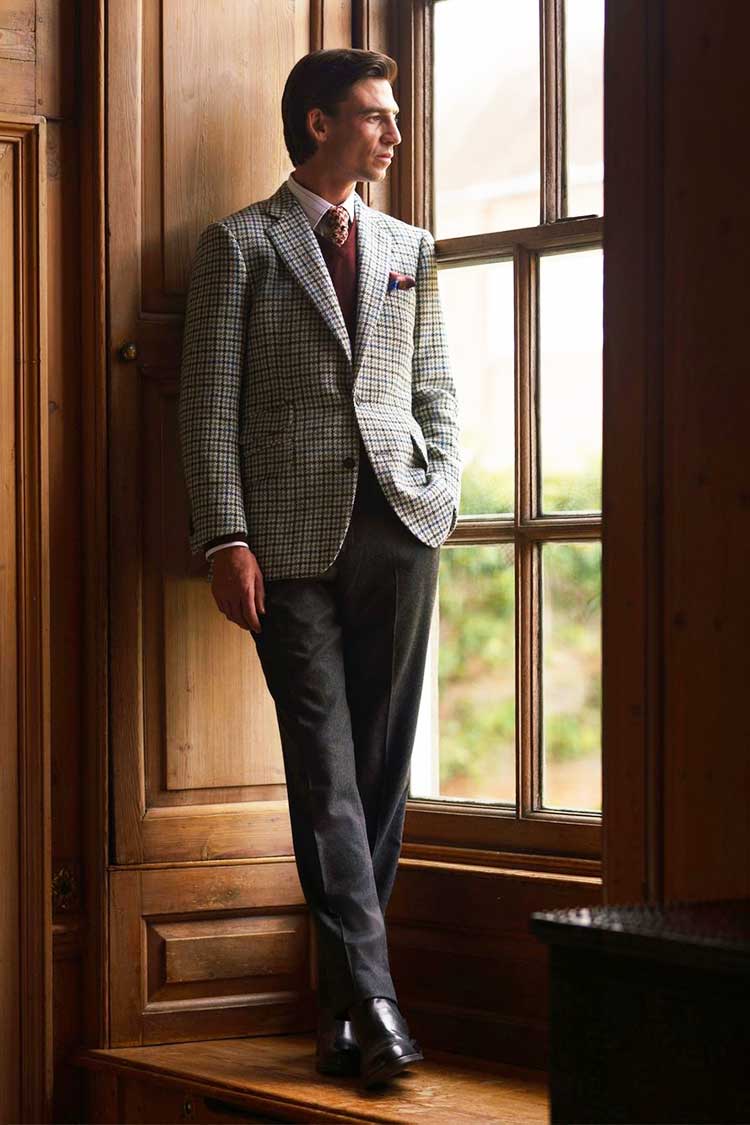
Renowned for its exceptional shirtmaking, Turnbull & Asser is a quintessentially British brand that has long been a favourite among discerning gentlemen.
Their formal wear collection, which includes crisp dress shirts, elegant cufflinks, and refined neckwear, is a true testament to the brand’s commitment to excellence.
Turnbull & Asser’s dress shirts are crafted from the finest two-fold Egyptian cotton, ensuring a luxurious feel and a perfectly tailored fit.
Their accessories, such as silk bow ties and mother-of-pearl cufflinks, are the perfect finishing touches to any formal ensemble, adding a touch of understated sophistication.
Thom Sweeney
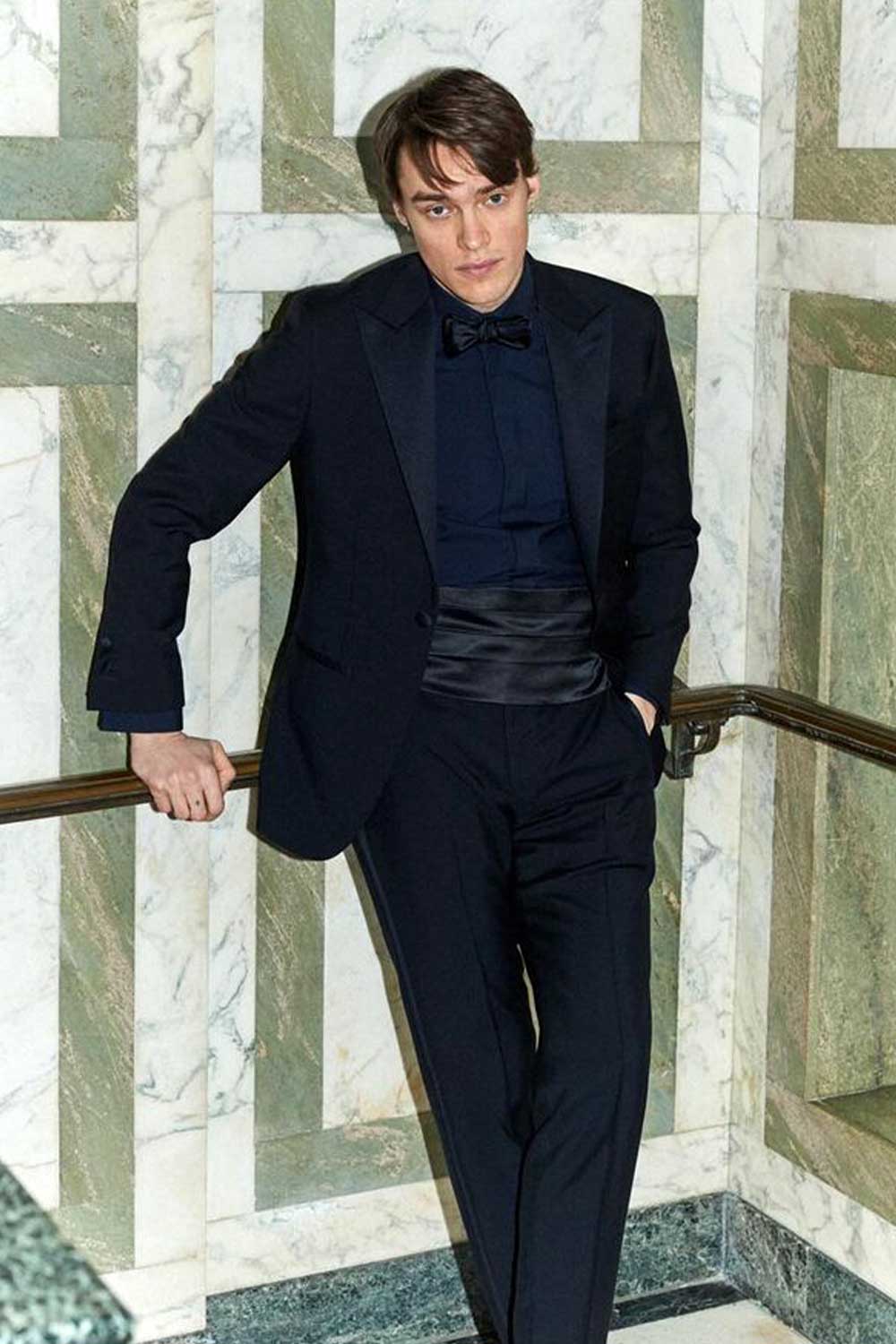
For a more modern take on traditional formal wear, consider the offerings from Thom Sweeney.
This London-based brand has made a name for itself by blending classic silhouettes with a contemporary edge, resulting in suits and tuxedos that are simultaneously timeless and on-trend.
The brand’s premium fabrics, such as brushed wool and mohair blends, add a tactile, luxurious element to its formal wear collection.
Charles Tyrwhitt
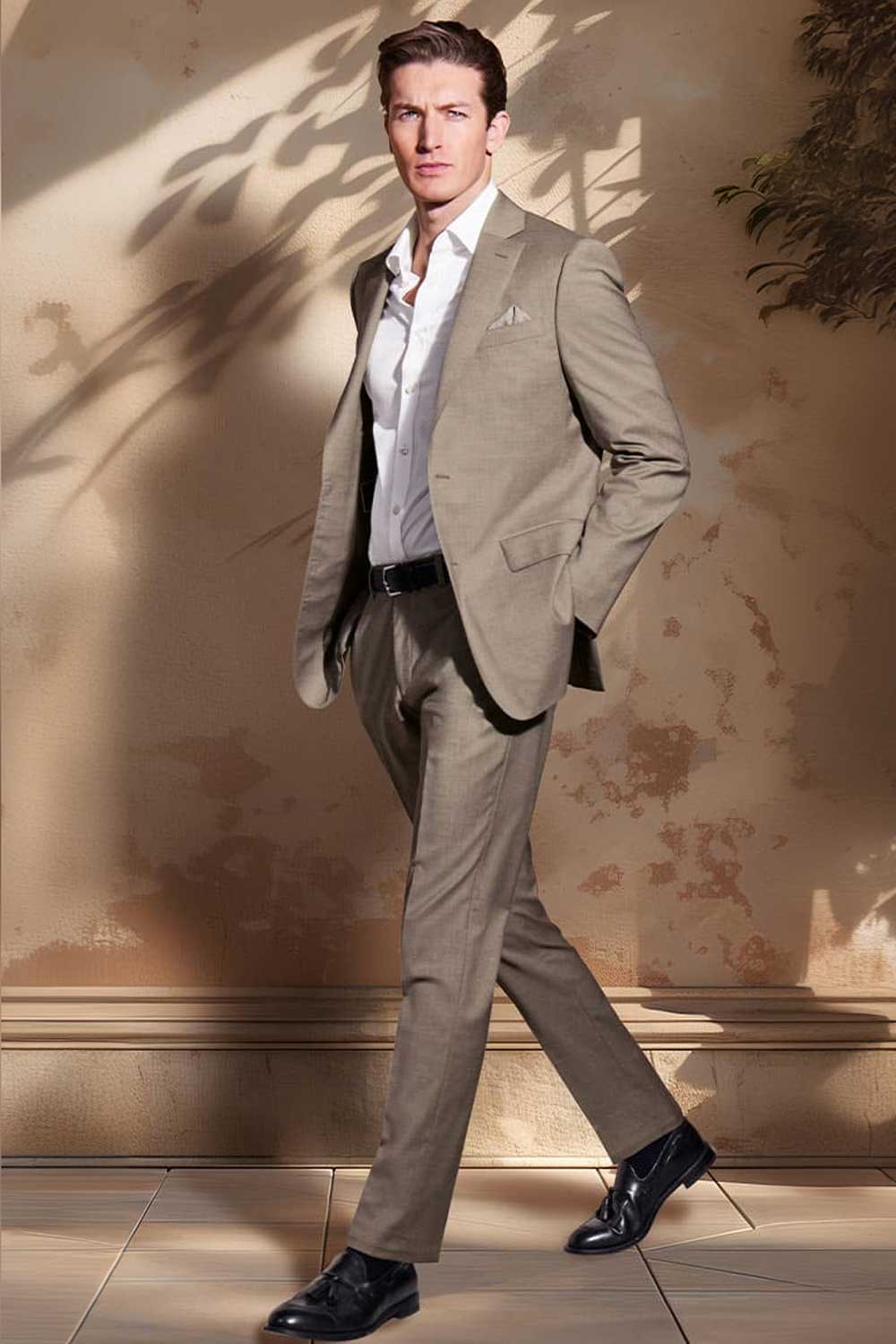
Rounding out our list is Charles Tyrwhitt, a British label renowned for producing high-quality, affordable formal wear.
While their prices may be more accessible than other brands on this list, their commitment to craftsmanship and attention to detail is no less impressive.
Charles Tyrwhitt’s suits and tuxedos also deliver exceptional value, with impeccable tailoring and classic styling that will have you looking and feeling your very best.
Hackett London
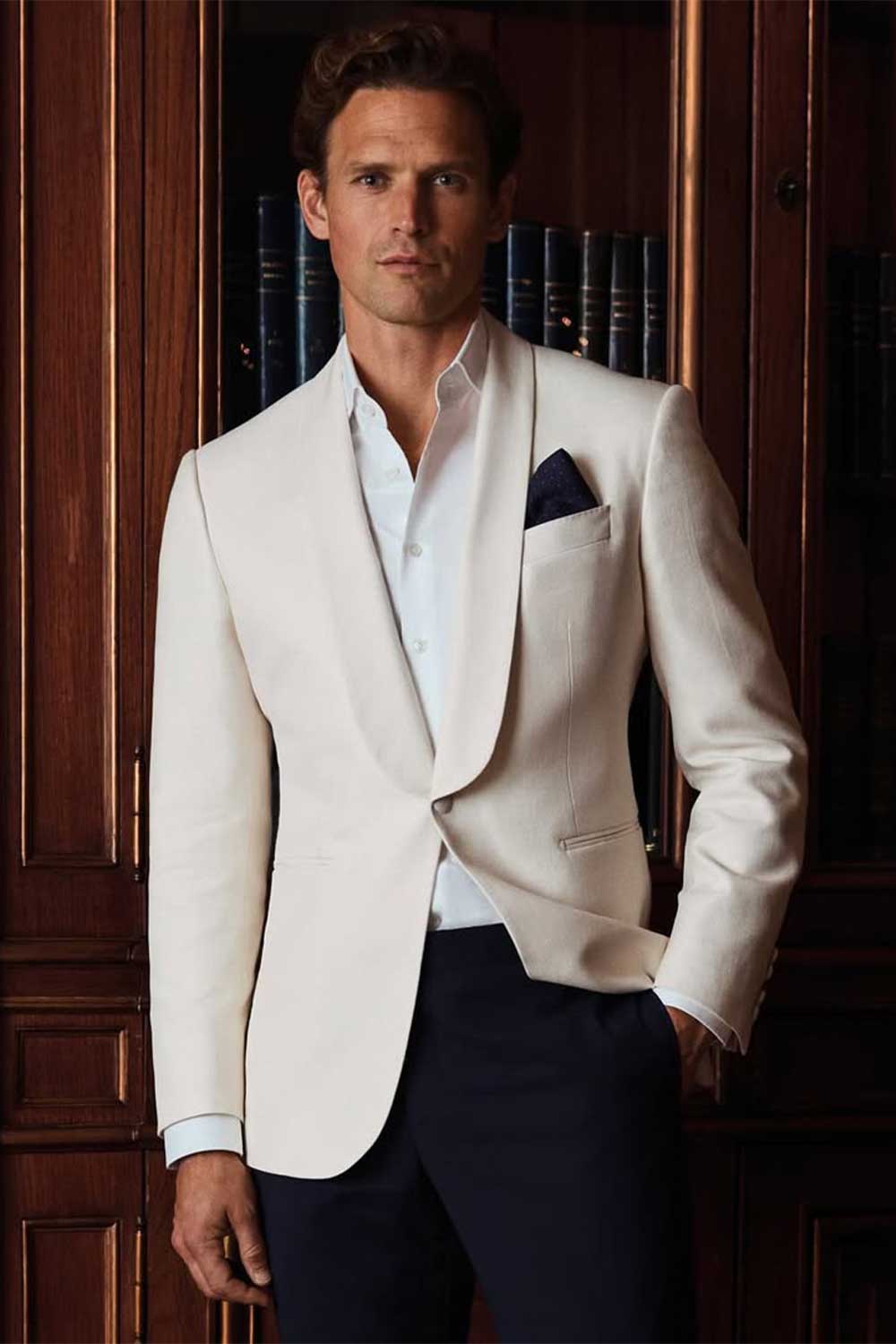
Hackett London has long been synonymous with quintessential British style, and their formal wear collection is no exception.
Drawing inspiration from the sartorial traditions of Savile Row, Hackett’s suits and tuxedos are imbued with a refined elegance that is uniquely British.
The brand’s expertise lies in the perfect balance of modern and classic, with slim-fit silhouettes and subtle design details that elevate each garment.
Brooks Brothers
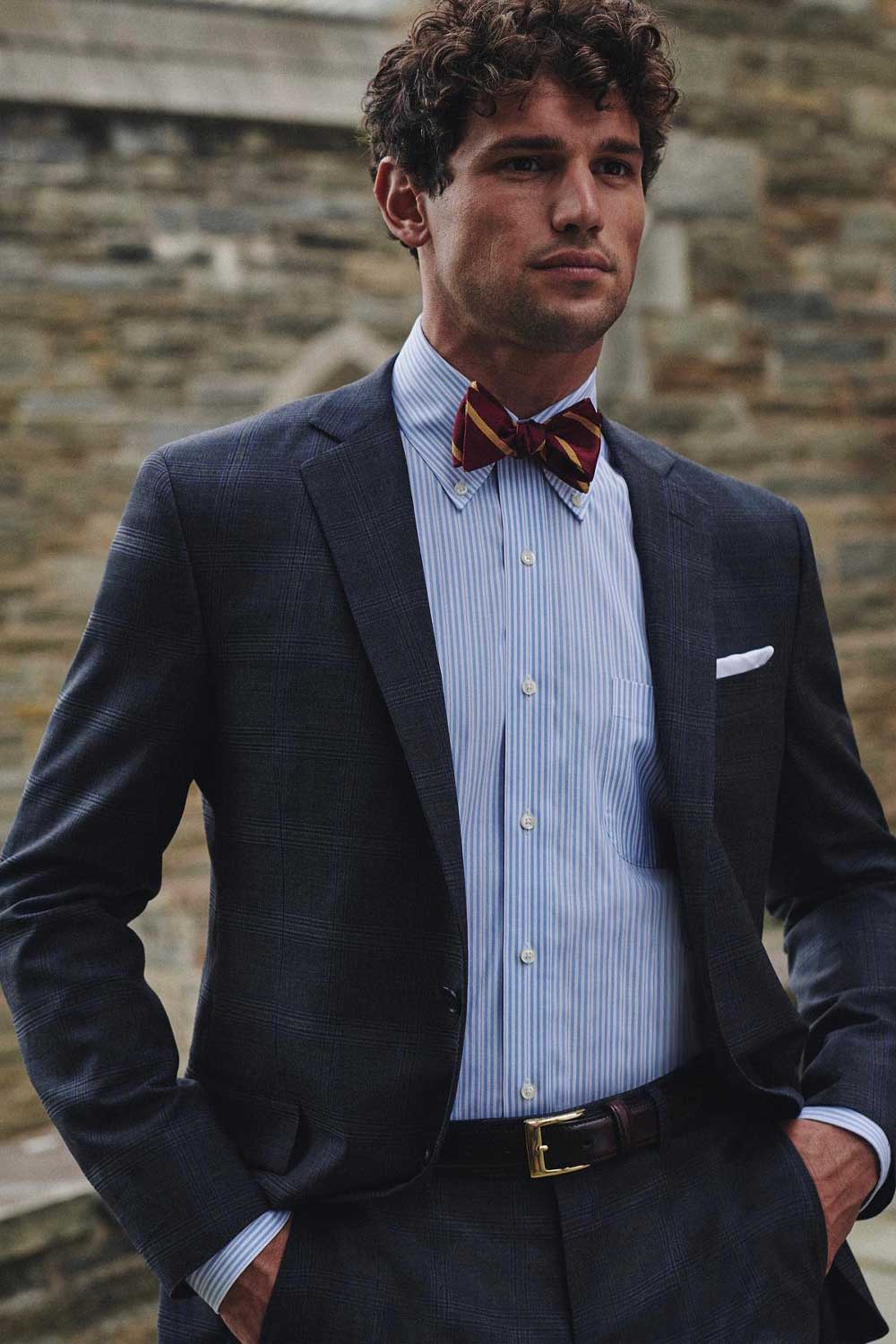
As one of the oldest and most prestigious menswear brands in the United States, Brooks Brothers has been dressing distinguished gentlemen since 1818, building an unparalleled reputation for quality, consistency, and timeless American style.
Their extensive formal wear collection represents a masterclass in enduring elegance, featuring impeccably crafted suits, tuxedos, and dress shirts that have literally stood the test of time and changing fashion trends.
The attention to detail that characterises every Brooks Brothers garment is genuinely remarkable and immediately apparent to those who appreciate quality construction.
From hand-stitched buttonholes and carefully shaped lapels to meticulously tailored silhouettes and premium fabric selections, each garment serves as a testament to the brand’s unwavering commitment to excellence and craftsmanship that has defined American luxury menswear for over two centuries.
Suit Supply
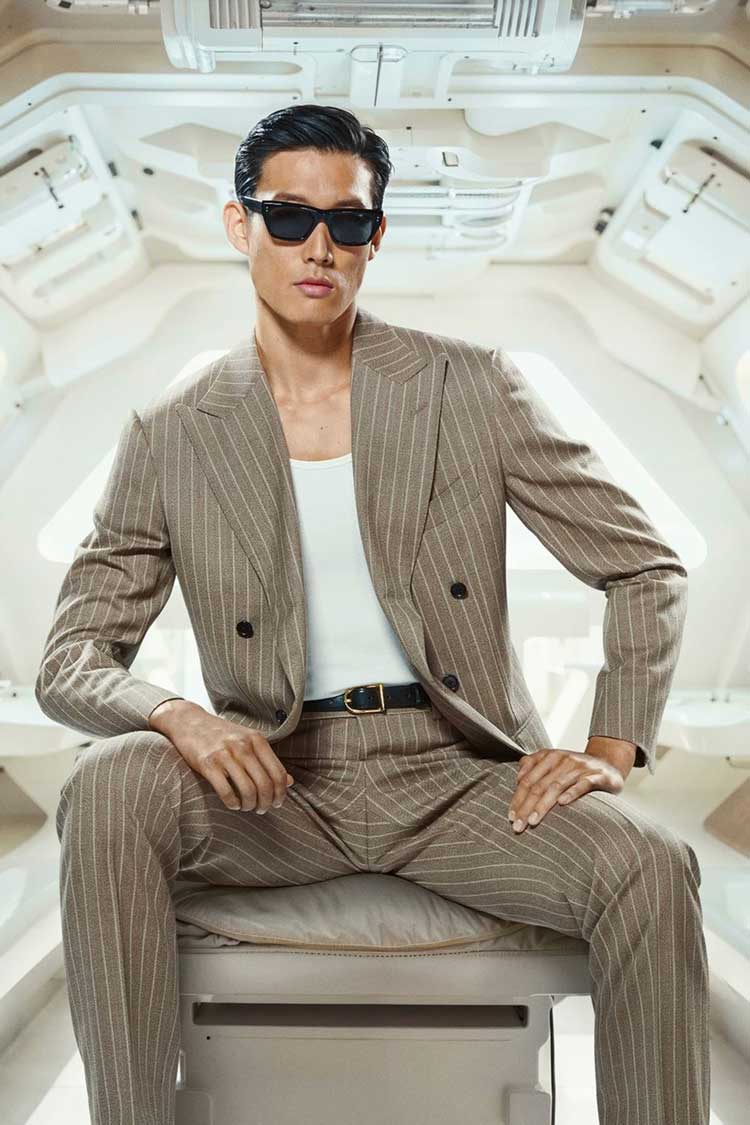
Hailing from the Netherlands, Suit Supply has quickly established itself as a go-to destination for men seeking expertly tailored suits and tuxedos that combine European craftsmanship traditions with contemporary accessibility and value.
From meticulously constructed Milano suits with their signature attention to fit and proportion to sleek, satin-lapelled tuxedos that rival far more expensive alternatives, Suit Supply offers an impressive array of formal wear options that seamlessly transition from boardroom presentations to elegant evening events.
The brand’s commitment to quality construction, premium fabrics, and modern fit principles has made it particularly popular among younger professionals who appreciate sophisticated styling without the premium pricing of traditional luxury brands.
Conclusion
At its core, formal attire for men represents a rich tapestry of tradition, history, and refined elegance.
By understanding and embracing this legacy, you can imbue your formal wear with a sense of timelessness that transcends fleeting trends.
Appreciate the craftsmanship, attention to detail, and pure sartorial artistry that go into creating exceptional formal garments. In doing so, you’ll look the part and feel a deep connection to the storied history of men’s formal fashion.
As you navigate the world of formal attire, remember that the true essence of this dress code lies not just in the clothes themselves but in the confidence, poise, and refined sensibility you bring to the occasion.
By combining your impeccable formal wear with an unwavering sense of self-assurance, you’ll be poised to make a lasting impression at your next high-profile event, turning heads and commanding the room with your undeniable style and grace.
After years of managing hundreds of fashion brands from London's office of a global retailer, Mandy has ventured into freelancing. Connected with several fashion retailers and media platforms in the US, Australia, and the UK, Mandy uses her expertise to consult for emerging fashion brands create top-notch content as an editorial strategist for several online publications.
With over twenty years of front-row fashion and styling events, collabs with haute-couture houses, and a PhD in Luxury Fashion, Laurenti is an expert in crafting personalised looks that depict old-money sophistication.
With years of expertise in high-end fashion collabs and a PhD in Sustainable Fashion, Ru specialises in eco-luxe wardrobes for the modern gentleman seeking understated refinement.
A passionate advocate for inclusivity and diversity, Aidan is the driving force behind The VOU as its Editorial Manager. With a unique blend of editorial acumen and project management prowess, Aidan's insightful articles have graced the pages of The Verge, WWD, Forbes, and WTVOX, reflecting his deep interest in the dynamic intersection of styling with grooming for men and beyond.


